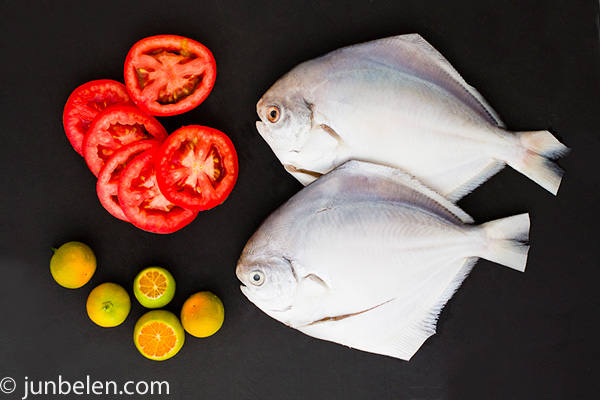I latched both my arms around her. I watched my every step as I carried her up the onerous Bernal Heights hill. Parking spots were far and few that balmy morning in the market and the only spot I could find was at the very top of a steep hill. She was a little over four feet tall but she was, thankfully, not too heavy. I, nevertheless, still huffed and puffed my way up the hill — a glaring proof that I was miserably out of shape. But that fateful morning wasn’t about me. It was all about her. She was my very first and my very own calamansi tree. I was leery of knocking off her delicate white blossoms and so I walked as carefully as I could. As slowly as I could. I was so excited to take her home and to have her get settled in our tiny garden next to our Lisbon lemon. I couldn’t remember any other time I was that excited about a tree.
“Keep her in this pot for now and wait until she bears fruit in March. I would transfer her to a bigger pot until then.” The cheerful Vietnamese lady who sold me the tree gave me the quick calamansi basics. She grows the Filipino citrus among other tropical fruits like champagne mangoes and even rambutans in a farm in Palmdale, northeast of Los Angeles, and drives all the way up to San Francisco on Saturday mornings to sell them at the Alemany Farmers’ Market.
“Water her every few days and let her soak in as much sun as she could possibly get,” she said.
“I don’t think that’ll be a problem,” I assured her. “We live in the sunniest side of the city. There’ll be plenty of sun.”
And so I thought there would. Winter came and went. March came and went. Spring came and went. The 260 sunny days a year in the sunniest side of the city proved inadequate for my calamansi. If only our patio weren’t shadowed by the buildings that surround it, the tree would get more sunlight. Eight precious hours of direct sunlight are recommended when growing citrus in pots. We’re lucky to even have a few.
But all’s well that ends well. After ten long months, which seemed like forever, we finally picked the fruits of our labor, no pun intended, last weekend. Our patience has been rewarded. Eight calamansi fruits. Eight beautiful jewels of citrus. Or was it seven? It seems trifling, I know. It may be a paltry harvest but you have no clue how much picking my own calamansi grown in my own garden meant to me. Calamansi is ubiquitous year-round back home and being able to grow my own calamansi in my own garden here in the city is incredibly gratifying.
The harvest wasn’t big enough for a calamansi tart but it was ample to make my mom’s fish pinangat [pee-nah-ngat] — whole fish simmered and soured in calamansi and tomatoes. Like fish sinigang, pinangat has a piquancy that makes you pucker in utmost delight. Other souring ingredients can be used in place of calamansi and tomatoes like sampalok (tamarind) and kamias, which are not available fresh in North America. But unlike sinigang, pinangat has no vegetables and its biting liquid is more like a sauce than a broth.
Whole pompano, tilapia, sapsap (slipmouth), and talakitok (cavalla), are excellent choices for making fish pinangat. Filets can certainly be substituted for whole fish if you’re too squeamish to eat with heads and bones but, I must tell, you clearly have no clue what you’re missing.
Fish Pinangat Recipe
1 lb whole white pompano, about 2 whole fish, cleaned and gutted
3 medium tomatoes, sliced crosswise
1/4 cup calamansi or lime juice
3/4 cup water
1 tablespoon olive oil
1 teaspoon salt, plus more to taste
pinch of freshly ground black pepper, plus more to taste
Line the bottom of a medium-sized pan with half of the tomato slices. Lay the whole fish on top of the tomatoes and then cover the top with the remaining tomatoes. Add the calamansi juice and water, bring to a boil then add the olive oil, salt and pepper, and let it simmer over medium to low heat until the fish is cooked through, about 20 minutes. Adjust the balance between acid and salt by adding calamansi or salt to taste. Serve with freshly steamed rice and don’t forget the fish sauce for dipping.
For those interested in learning more about how to grow calamansi and other citrus trees at home, check out Four Winds Growers and their invaluable tips and advice. Always remember to never overwater your citrus trees and let them soak in as much sunlight as they could possibly get.



Pingback: Oven Roasted Vine-Ripened Tomato Sauce()
Pingback: I is for Itlog na Maalat and How to Make Salted Duck Eggs | Jun-Blog()
Pingback: How to Make Daing na Bangus | Jun-Blog()